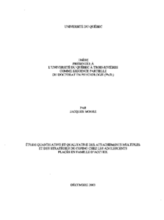Demographic Data
|
Sources: World Bank, UNICEF, UNDP HDR 2015, DHS 2014 |
Displaying 13991 - 14000 of 14391
Brief summary of the role of informal, institutional and child-headed households as a result of the AIDS epidemic. Includes general standards by which to implement good practices in child care.
A faith-based approach to promoting and integrating child participation into communities. Includes guidelines for the design, implementation and evaluation of programs, as well as specific activity recommendations and case studies.
This paper outlines some of the key issues facing separated children, which include physical, protective, psychosocial and guardianship needs. It describes program interventions to prevent separation, to trace and reunify families, to plan interim and long-term care arrangements for separated children.
An informal evaluation of an NGO residential institution in Zimbabwe, based on the opinions of the child residents. Includes recommendations for the improvement of residential care.
A guide for camp management agencies that provides instruction on the care and protection of all children (under 18), as well as those with specific needs, such as unaccompanied and separated children, child heads of households, children formerly associated with armed forces, and out-of-school and unemployed adolescents and youth.
The NSPPI provides overall guidance to implementers to mitigate the impact of orphan hood and other vulnerabilities among children in Uganda.
This document is the official policy governing National Orphans and OVC of the Ministry of Gender, Labour and Social Development (MGLSD) of the Republic of Uganda. The policy interprets a vision of a society where all orphans and other vulnerable children live to their full potential, where their rights and aspirations are fulfilled.
Research on the incidence, living arrangements, and causes of lower school enrollment of orphans in Sub-Saharan Africa.
Provides a brief overview of child welfare reforms implemented in the ECA Region and the collective effort to move away from over-emphasis on institutional care through the Changing Minds, Policies and Lives Project.
Cette these de doctorat porte sur l'attachement et les capacites adaptatives des adolescents places en famille d'accueil.









